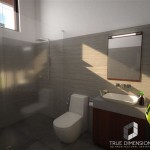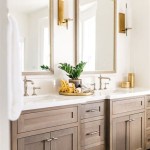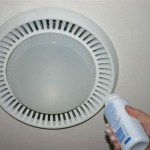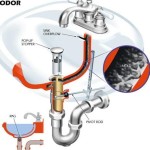Replacing Bathroom LED Bulbs: A Comprehensive Guide
Updating the lighting in a bathroom can significantly improve its ambiance and functionality. One of the simplest and most effective ways to do this is by replacing outdated or inefficient light bulbs with LED (Light Emitting Diode) alternatives. LED bulbs offer numerous advantages, including energy efficiency, longer lifespan, and a variety of color temperatures that can enhance the overall aesthetic of the space. This article provides a detailed guide on how to safely and effectively replace bathroom LED bulbs, ensuring optimal lighting performance and longevity.
Before embarking on the replacement process, it is crucial to understand the different types of bulbs commonly found in bathrooms. Incandescent bulbs, while inexpensive, are highly inefficient and have a short lifespan. Halogen bulbs offer slightly better efficiency than incandescent options but still consume considerable energy. Compact Fluorescent Lamps (CFLs) are more energy-efficient than incandescent and halogen bulbs but contain mercury and require careful disposal. LED bulbs, on the other hand, are the most energy-efficient option and have a significantly longer lifespan than other types. They are also free from hazardous materials like mercury.
Choosing the right LED bulb for a bathroom involves considering several factors, including wattage, lumen output, color temperature, and bulb shape. Wattage refers to the amount of energy the bulb consumes, while lumen output indicates the brightness of the bulb. Color temperature, measured in Kelvin (K), determines the color of the light emitted. Warmer color temperatures (around 2700K-3000K) create a cozy and inviting atmosphere, while cooler color temperatures (around 4000K-5000K) provide a brighter, more energizing light. Bulb shape is primarily an aesthetic consideration and should complement the fixture.
Selecting the Correct Replacement LED Bulb
The first step in replacing a bathroom LED bulb is to identify the existing bulb type and its specifications. This information is typically printed on the bulb itself. Note the wattage, voltage, and bulb base type (e.g., E26, GU10). It is important to select a replacement LED bulb with the same voltage as the existing bulb. While wattage is a measure of energy consumption, lumen output determines brightness. When switching to LED, select a bulb with a lumen output that matches or exceeds the brightness of the existing bulb. This ensures that the new bulb provides adequate illumination. For example, a 60-watt incandescent bulb produces approximately 800 lumens. An equivalent LED bulb will typically consume only 8-12 watts to produce the same lumen output.
Consider the color temperature of the bulb. For bathrooms, a color temperature between 2700K and 5000K is generally recommended. Warmer color temperatures, such as 2700K-3000K, create a relaxing and inviting atmosphere, ideal for master bathrooms. Cooler color temperatures, such as 4000K-5000K, provide a brighter and more invigorating light, suitable for smaller bathrooms or vanity areas. The choice ultimately depends on personal preference and the desired ambiance of the bathroom.
Pay attention to the bulb base type. Common bulb base types include E26 (standard screw-in base), E12 (candelabra base), GU10 (twist-and-lock base), and MR16 (two-pin base). Ensure that the replacement LED bulb has the same base type as the existing bulb. Using the wrong base type can damage the fixture or the bulb itself. Additionally, consider the bulb shape. Common bulb shapes include A19 (standard bulb shape), BR30 (floodlight shape), PAR38 (spotlight shape), and G25 (globe shape). Choose a bulb shape that complements the fixture and provides the desired light distribution.
When purchasing LED bulbs, look for products with Energy Star certification. Energy Star certified bulbs meet stringent energy efficiency and performance standards. They are tested and verified to provide consistent light output, color rendering, and lifespan. Investing in Energy Star certified bulbs can save money on energy bills and ensure long-lasting performance. Furthermore, consider the lifespan of the LED bulb. Look for bulbs with a rated lifespan of at least 15,000 hours. This will minimize the frequency of replacements and reduce maintenance costs.
Dimmability is another important factor to consider, especially if the bathroom has a dimmer switch. Not all LED bulbs are dimmable, and using a non-dimmable LED bulb with a dimmer switch can cause flickering, buzzing, or premature bulb failure. If dimming is desired, select LED bulbs that are specifically labeled as dimmable and are compatible with the existing dimmer switch. Consult the dimmer switch manufacturer's specifications to ensure compatibility with LED bulbs. Many modern dimmer switches are designed to work with LED bulbs, but older dimmer switches may require replacement to ensure proper dimming performance.
Safety Precautions and Preparation
Safety is paramount when working with electrical fixtures. Before replacing any light bulb, turn off the power to the fixture at the circuit breaker. This prevents the risk of electric shock. Locate the circuit breaker that controls the bathroom lighting and switch it to the "off" position. Verify that the power is off by testing the light fixture with a non-contact voltage tester. This device detects the presence of voltage without requiring direct contact with the electrical components. If the voltage tester indicates the presence of voltage, double-check the circuit breaker to ensure it is properly switched off.
Allow the old bulb to cool down completely before attempting to remove it. Incandescent and halogen bulbs can become extremely hot during operation and can cause burns if touched immediately after being switched off. Wait at least 15 minutes for the bulb to cool down before handling it. Using gloves during the replacement process provides an extra layer of protection against heat and prevents skin oils from contaminating the new bulb, which can shorten its lifespan.
Gather the necessary tools and materials before starting the replacement process. These include a stepladder or sturdy chair to reach the fixture, gloves to protect your hands, a non-contact voltage tester to verify that the power is off, and the replacement LED bulb. If the fixture has a glass cover or diffuser, it may be necessary to remove it to access the bulb. Refer to the fixture's instructions for guidance on how to safely remove the cover. In some cases, a screwdriver may be required to loosen screws that hold the cover in place.
Inspect the light fixture for any signs of damage or corrosion. If the fixture is damaged or corroded, it may be necessary to replace the entire fixture. Contact a qualified electrician to inspect the fixture and perform any necessary repairs or replacements. Do not attempt to repair a damaged fixture yourself, as this can pose a safety hazard. Furthermore, ensure that the bathroom is well-ventilated during the replacement process. This is especially important if replacing CFL bulbs, as they contain mercury and can release harmful vapors if broken.
Step-by-Step Bulb Replacement Process
Once the power is off, the old bulb has cooled down, and the necessary tools and materials are gathered, the replacement process can begin. Gently grasp the old bulb and rotate it counterclockwise to unscrew it from the socket. If the bulb is stuck, try using a rubber glove to improve grip. Avoid applying excessive force, as this can break the bulb and create a safety hazard. If the bulb is a twist-and-lock type, such as a GU10, rotate it to the unlocked position and gently pull it straight out of the socket.
Carefully dispose of the old bulb according to local regulations. Incandescent and halogen bulbs can be disposed of in regular household waste. However, CFL bulbs contain mercury and require special disposal to prevent environmental contamination. Check with your local waste management authority for information on how to properly dispose of CFL bulbs. Many hardware stores and recycling centers offer CFL recycling programs.
Insert the new LED bulb into the socket. Align the bulb base with the socket and rotate it clockwise until it is securely in place. Do not overtighten the bulb, as this can damage the socket. If the bulb is a twist-and-lock type, align the pins on the bulb base with the slots in the socket and gently push the bulb in while rotating it to the locked position. Ensure that the bulb is securely seated in the socket before proceeding.
If the fixture has a glass cover or diffuser, reinstall it according to the fixture's instructions. Make sure that the cover is securely attached and that all screws are tightened. Turn the power back on at the circuit breaker and test the new LED bulb. If the bulb does not light up, double-check the circuit breaker to ensure it is properly switched on. Also, verify that the bulb is securely seated in the socket and that the correct bulb type was selected. If the bulb still does not light up, contact a qualified electrician to troubleshoot the problem.
After verifying that the new LED bulb is working properly, observe its brightness and color temperature. If the bulb is too bright or too dim, or if the color temperature is not to your liking, consider trying a different bulb with different specifications. It may be necessary to experiment with different bulbs to find the perfect fit for your bathroom. Once you are satisfied with the lighting, clean up any debris or materials from the replacement process and store the tools and materials in a safe place.
Regularly cleaning the light fixtures in the bathroom can help maintain their brightness and prevent dust and grime from accumulating on the bulbs. Use a soft, dry cloth to wipe down the fixtures and bulbs. Avoid using harsh chemicals or abrasive cleaners, as these can damage the finish of the fixture or the bulb itself. By following these steps, you can safely and effectively replace bathroom LED bulbs and enjoy the benefits of energy-efficient and long-lasting lighting.

Easy Ways To Replace An Led Recessed Light Bulb 13 Steps

Replacement Bulbs Accessories For Bathrooms Fans Fantech

Changing A Bulb In Sealed Bathroom Downlight Diynot Forums

The Essential Guide To Bathroom Led Lighting Super Bright Leds

How To Update Old And Yellowed Recessed Lights Led Thrifty Decor Diy Organizing

Vehicode 1156 1141 20 99 Led Bulb Rv Vanity Lights 12v Soft Warm White Ba15s Interior Bathroom Lamp 1139 1139if 1383 1143 Reading Replacement For Camper Travel Trailer Motorhome Boat Marine 3 Pack Com

Can I Replace My Incandescent Or Halogen Bulbs With Led Customer Service Q

4pack Bathroom Light Bulbs 60 Watt Equivalent Daylight G25 Led Globe

Ceiling Light Easy Led Bulb Replacement Balcony Yard Hallway Bathroom Etc Furniture Home Living Lighting Fans On Carou

What Is Damp Rated Lighting Does My Bathroom Need It
Related Posts







